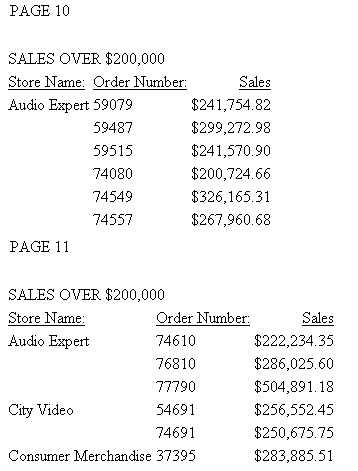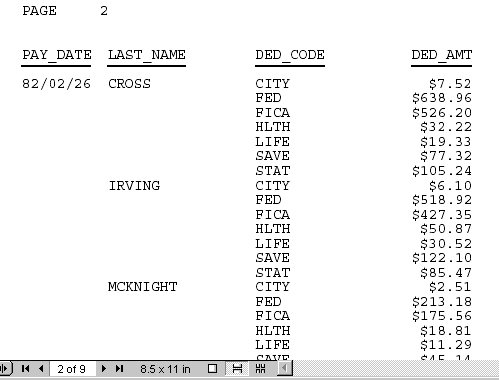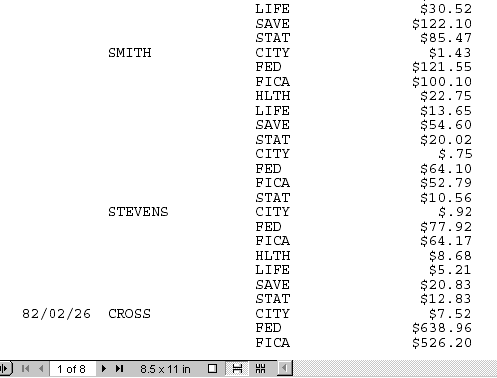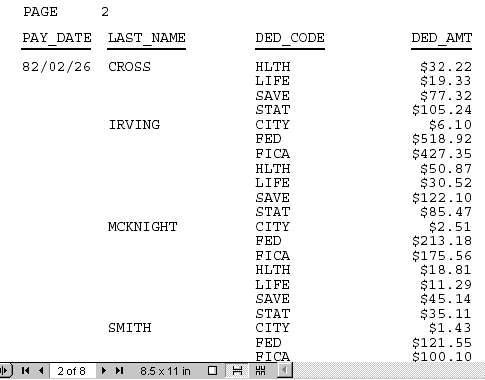Syntax: How to Insert a Page Break
{ON|BY} fieldname PAGE-BREAK [REPAGE] [WHEN expression;]where:
- ON|BY
-
Is a vertical sort phrase. The terms are synonymous.
- fieldname
-
Is the sort field on which the page break occurs. Specify the lowest level sort field at which the page break occurs. A page break occurs automatically whenever a higher level sort field changes.
- REPAGE
-
Resets the page number to 1 at each page break or, if combined with WHEN, whenever the WHEN criteria are met.
- WHEN expression
-
Specifies a conditional page break in the printing of a report as determined by a logical expression. See Controlling Report Formatting for details.
Example: Inserting a Page Break
This request generates a new page whenever the value of the sort field SALARY changes.
TABLE FILE EMPLOYEE PRINT EMP_ID BY SALARY IN-GROUPS-OF 5000 BY PCT_INC BY DAT_INC ON SALARY PAGE-BREAK ON TABLE SET ONLINE-FMT PDF ON TABLE SET PAGE-NUM OFF END
The first two pages of the report are displayed to illustrate where the page breaks occur:
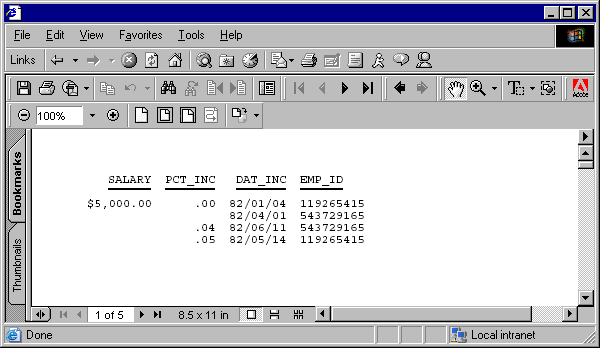
The second page is:
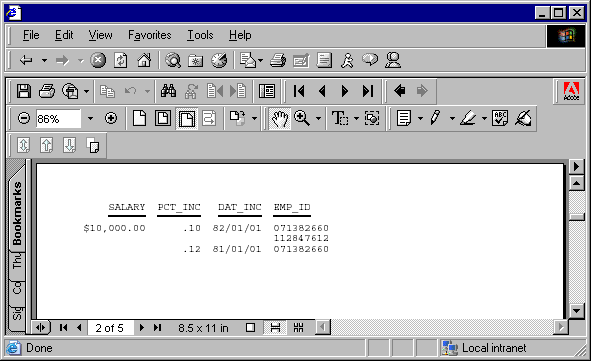
Example: Displaying a Multiple-Table HTML Report
In this request, each page is returned to the browser as a separate HTML table. SQUEEZE is set to OFF for consistent alignment of tables across pages.
SET STYLEMODE = PAGED SET LINES = 12 TABLE FILE CENTORD HEADING "SALES OVER $200,000" PRINT LINEPRICE AS 'Sales' BY SNAME BY ORDER_NUM WHERE LINEPRICE GT 200000 ON TABLE SET STYLE * TYPE=REPORT, GRID=OFF, SQUEEZE=OFF, $ ENDSTYLE END
Two pages of the report follow, showing consistent alignment:
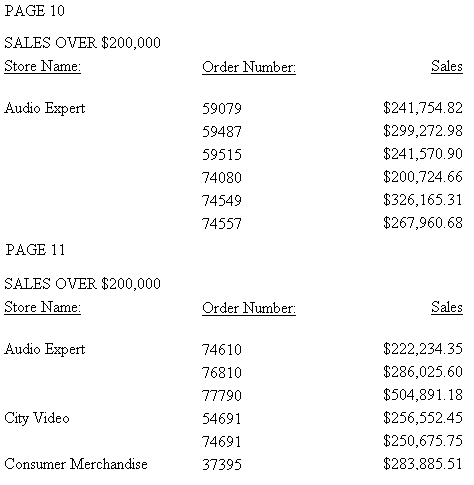
The same two pages illustrate inconsistent alignment with SQUEEZE set to ON:
